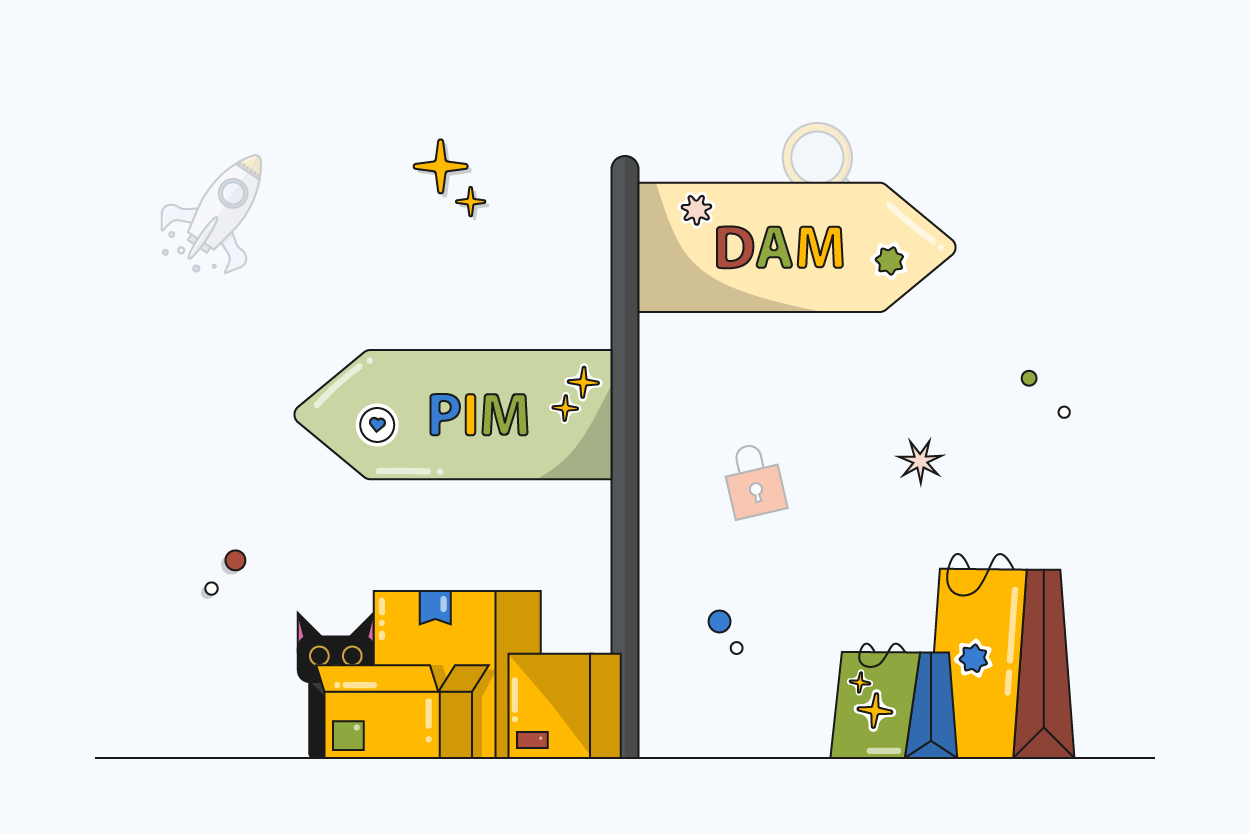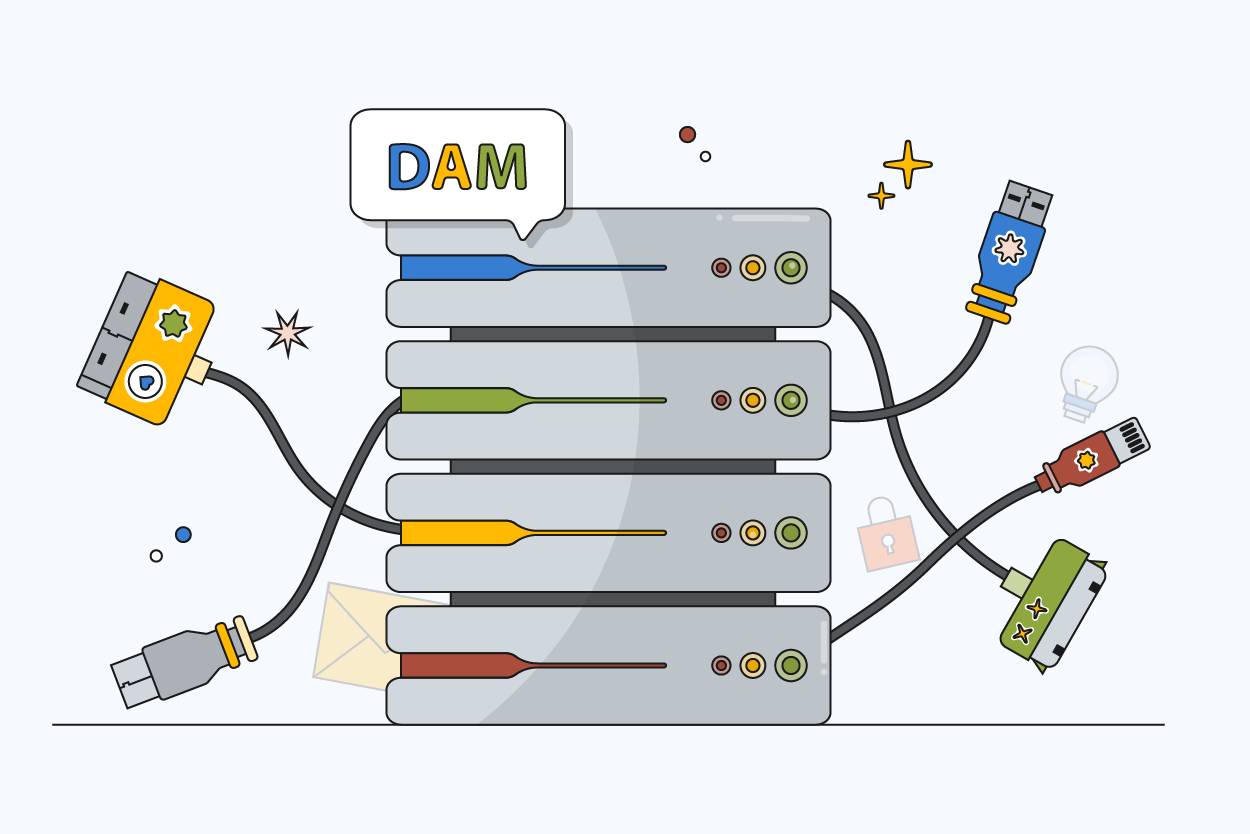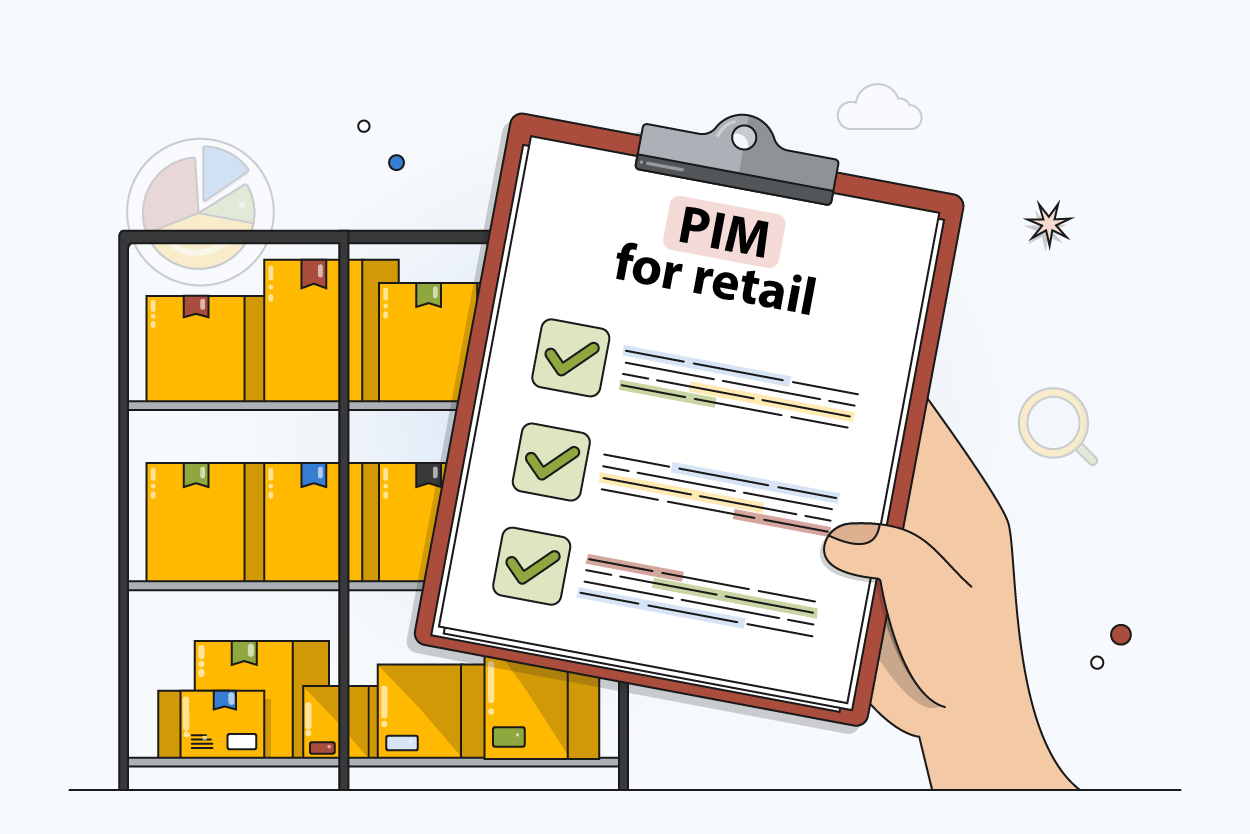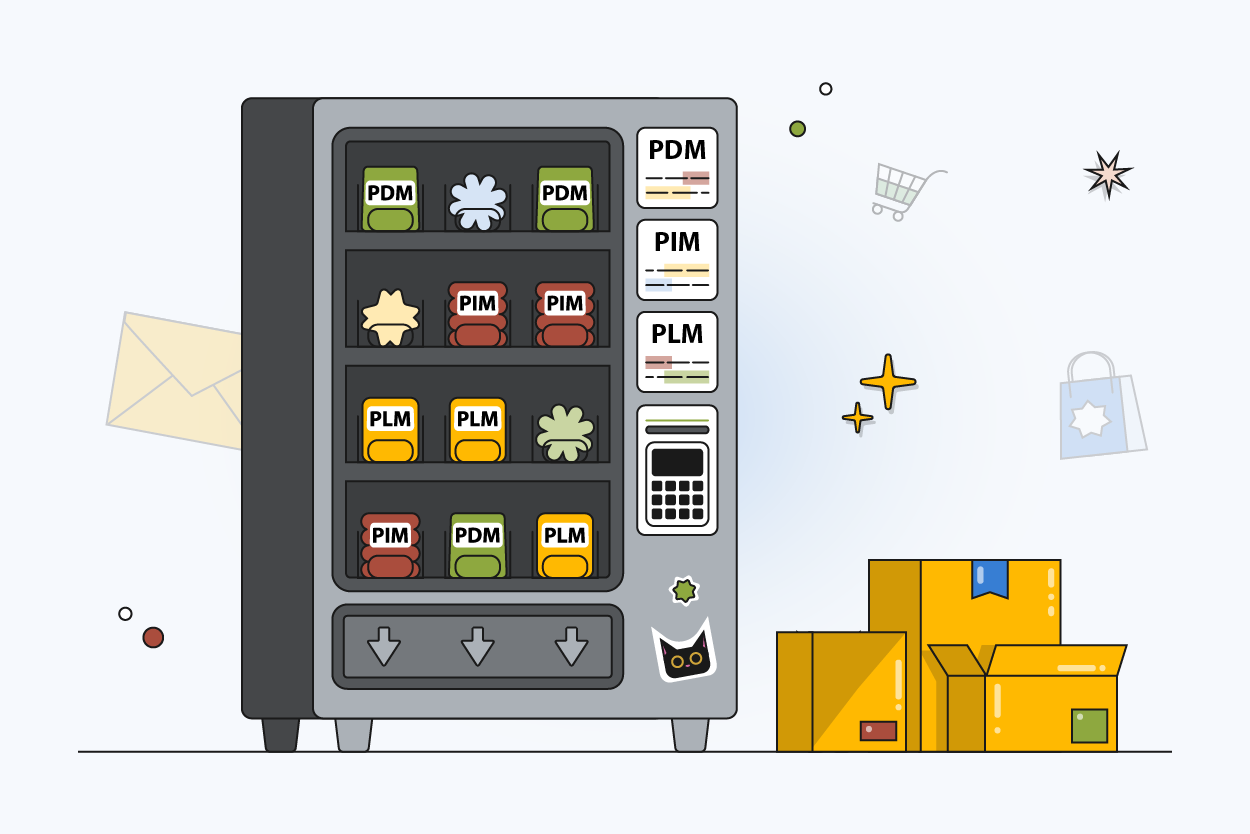PIM vs DAM: What is the Difference
Author name: Maksym Bilokon

When you sell goods and services across multiple channels, you always have to deal with large amounts of data. Retailers, marketers and other individuals who are somehow involved in the process receive information, create or change it, and rely on it when making a choice. Companies who sell products understand that, and that’s why they use all the available resources to stay organized and deliver data in the best possible way.
There are dozens of solutions that help big and small companies manage information effectively, update information on all channels, and avoid common mistakes. Still, most businesses choose product information management (PIM) and digital asset management (DAM). These practices may look similar, but in fact, they have plenty of differences and are set to accomplish different tasks. People are often confused when deciding what type of digital asset to choose for their business, or there is a point in selecting them both. To shatter such confusion and help companies make the right choice, we will compare PIM and DAM and tell you everything you should know about these assets.
What is Product Information Management (PIM)?
Product information management (PIM) is a software (or a category of products) set to process data by organizing, managing, and distributing it. With this approach, you can ensure your product information will be updated and consistent across all channels. When you use PIM, you have a single source of truth for information. It means if you need data about any product, you can access the source of truth and find it there.Benefits of PIM
Let’s get closer to the point and take a look at the benefits of product information management.
- Short time-to-market. Since all the product data and the information that is associated with it sticks to one platform, it’s easy to adapt to market changes. When you enter a new market or marketplaces for distribution, all the catalogues and portfolios will be updated quickly.
- Exceptional operation work. With a single master location to store product data, you have improved operation efficiency and higher inventory accuracy. In most cases, PIM is combined with an enterprise resource planning (ERP) system because it grants better consistency and transparency of all procedures related to products.
- High-quality customer experience. With a short time to market, customers spend less time getting the desired products, which positively impacts their experience. Clients will receive updated product data on time, which makes it easier to make a decision about the purchase.
Want to Learn More About PIM?
Discover how Product Information Management can transform your product data workflows, improve accuracy, and accelerate time-to-market for your business.
What is Digital Asset Management (DAM)?
DAM, or digital asset management, is a set of options used to store, manage, and distribute digital assets. By digital assets, we mean documents, videos, images, logos, presentations, and other materials related to marketing and selling.
The main purpose of using digital asset management is to increase the value of digital assets by simplifying the process of finding, getting, and using such products by those who need them. Another purpose of DAM is to have a single source of truth inside the organization. Moreover, with automated workflow, the productivity of the entire organization rises.

Benefits of DAM
Now, to the main advantages of digital asset management for your business.
- Creating an ecosystem for your assets. DAM is simple to integrate in almost any structure or organization, which allows you to build a dynamic network. Thanks to advanced metadata capabilities, digital asset management effectively finds and gets the needed data from the programs. It makes digital assets more valuable because they are easy to handle.
- Increasing the security and consistency of your brand. Protection is another aspect that gets boosted once you use DAM. When you implement this set of options, you will limit the number of users who can enter the system, engage with digital assets, change them, etc. Moreover, when you share access with someone from the outside, the protection level is still high.
- Optimizing your marketing efforts. With DAM, everyone in your team becomes more effective due to automation. Digital asset management helps employees avoid doweling forces and increase efficiency in all aspects. Moreover, such systems could be integrated with side apps (for example, production systems), so you will process media much faster.
Ready to Master Digital Asset Management?
Learn everything about DAM systems, from organizing digital assets to streamlining creative workflows and maintaining brand consistency across all channels.
What Are the Major Differences Between PIM and DAM?
Despite the fact that both PIM and DAM are used to store content with a single source of truth, it’s essential to understand the difference between these two practices. Once you know how they differ, you will choose wisely and boost the company's performance.
The Purpose
With PIM, it’s much easier for brands to maintain product information across various channels. With product information management, it’s much easier to manage major data changes and update the information across multiple channels. At the same time, DAM helps employees and users work with digital media assets. DAM is a major component for graphic designers or editors to enhance, change, and publish media files.
Types of Content
The next major aspect that differs between PIM and DAM is the type of content they process. Companies use PIM for basic product information (title, weight, size, colour, etc.), while brands that work with DAM manage other types of content (brand logos, images, product templates, promo videos, user reviews, product-related podcasts, etc.).
Integrations
Both PIM and DAM make a difference in the overall brand performance. Still, they can make an even bigger difference with integrated tools. You only need to know what kinds of tools you can integrate into product information management and digital asset management. For PIM, you can integrate the following instruments:
- ERP system
- PLM system
- E-commerce platform
At the same time, DAM can be boosted with these tools:
- CRM system
- CMS (content management system)
- Software for photo and video editing
| Aspect | Product Information Management (PIM) | Digital Asset Management (DAM) |
|---|---|---|
| Definition | Centralized management of product data and information. | Centralized management of digital assets like images, videos, etc. |
| Purpose | To ensure accurate and consistent product data across all channels. | To store, organize, and retrieve digital assets efficiently. |
| Primary Users | Product managers, marketing teams, e-commerce teams. | Marketing teams, creative teams, content creators. |
| Key Components | Product attributes, specifications, descriptions, pricing, availability. | Images, videos, documents, branding materials, multimedia files. |
| Data Types Managed | Textual data, numerical data, product specifications. | Media files, graphics, video, audio, documents. |
| Integration | E-commerce platforms, ERP systems, marketing channels. | Content management systems (CMS), creative software, social media. |
| Benefits | Enhanced product data accuracy, improved time-to-market, consistency. | Streamlined asset retrieval, brand consistency, efficient workflows. |
| Challenges | Data quality maintenance, integration complexity, scalability. | Metadata management, storage requirements, user access control. |
| Typical Features | Data enrichment, multi-channel publishing, workflow management. | Metadata tagging, version control, search and retrieval. |
| Examples of Use Cases | E-commerce product listings, catalog management, marketing content. | Managing marketing campaigns, social media content, brand assets. |
| Scalability | Suitable for enterprises with large product catalogs. | Suitable for organizations with extensive digital media libraries. |
Why Companies Need PIM and DAM: Understanding the Importance and Benefits
PIM and DAM are both needed to boost business and enhance management. Since these software have different purposes and process different types of data, they cannot replace each other. If you launch a new product and expect a successful rollout, everyone in your team must have access to the necessary information. This is where PIM is needed.
Later, when it comes to launching and selling, you can’t do it without visuals - a major component of every product. DAM is a key to all videos, images, GIFs, graphs, etc.
Benefits of Integrating PIM and DAM in Business
The main advantage of PIM and DAM integration is advanced management. These major components of the workflow allow you to reduce the workload, increase efficiency, and remove barriers inside the team. At the same time, PIM and DAM integration positively impact customer experience and deliver product information in the best possible way. Everything is updated and accurate, and each product belongs to the needed category, which may be impossible if all the processes are controlled by humans.
PIM and DAM: Better Together
PIM and DAM are completely different, but when they are integrated into one system, it’s a completely different experience. Your business no longer struggles trying to optimize data and bring it to a unified format. Product information management and digital asset management also improve the collaboration between teams, making it much easier to exchange information and avoid misunderstandings.
Get PIM and DAM in One Powerful Platform
PIMinto combines product information management with built-in digital asset management. See how our integrated solution can simplify your workflows and eliminate data silos.
Modified on: 2024-05-30



